ARCHITECTURAL REVIEW
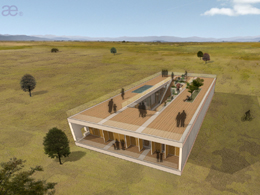
01 April, 2014
Escalteca of the Choetheque Series
Theorem: Take the top and bottom slabs of a hollowed parallelepiped, elongated but squat. Incise upon them longitudinally two shorter parallel lines dividing their width at equal distances, thus defining three identical linear zones.
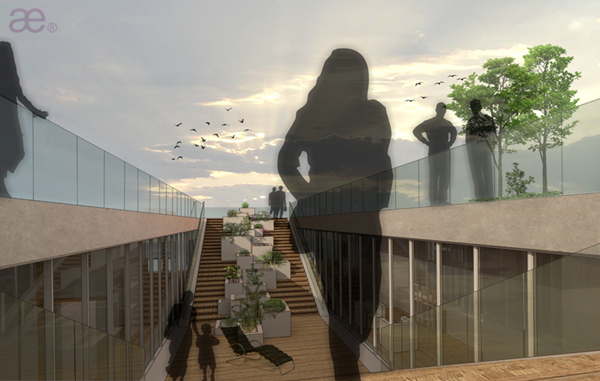
_Choe series Statement
The 2014 _Choe series by Aristotheke Eutectonics specifically addresses the nascent outset of pilotis by lifting all indoor spaces and enclosed volumes off-ground and removing all normative columns as well, while replacing those by the structurally-geared volumes of stairs and elevators or shafts reaching down to the ground from the raised floors. These three-dimensional (inescapable) elements are the sole means linking remote living plateaus to the natural terrain and constitute a re-reading of the Dom-ino scheme, emphasizing programmatic priorities rather than abstracting structural minimalism as the original 1914 scheme does.
Introducing _Choe, in classical Hellenic ceramics an amphora is a larger container for various liquids, yet used primarily for transport and storage. Smaller ceramic jars, or rather pitchers, designed to sit on a flat surface, on the table, and avoid dripping while pouring, establish the Chous type. Pouring is the act that defines morphologically the 2014 interpretation of the Dom-ino. Key difference (among others) between a single-handle oenochoe (or olpe, wine jug of ancient Greece) from a hydria (three-handle water pot for transportation as well as serving) is the characteristic distortion at the top lip of the vessel, an open spout, an outward beaking for the pouring of wine, mostly generating a trefoil outline in plan. Equally to this customization of the otherwise symmetrical and revolving solids of the vases, the _Choe projects lose their absoluteness and symmetry as to generate routes, their legs, for the flow of people and matter between man-made (up) and natural (down) plateaus, presenting various interpretations of the central outset.
Theorem: Take the top and bottom slabs of a hollowed parallelepiped, elongated but squat. Incise upon them longitudinally two shorter parallel lines dividing their width at equal distances, thus defining three identical linear zones. Push down at the center of the middle zone for a depth equal to the box height or until top face meets bottom face. Remove the perimeter walls of the initial box. Organize this as a private house.
The archetype of modernist pilotis derives tentatively from the tree-house and potentially the lake-house - raised on stilts as to avoid excessive floods; both being "prosthetic" iterations of the so-called 'primordial house'. These two archetypes lie in contrast to the opposing "subtractive" archetype of the cave, natural or made and to masonry-based iterations attached to the earth or embedded in it through the removal of material. Here, while Escalteca does not stand on pilotis in a conventional sense, its main volume does not touch the earth, even though it mushrooms out of it.
Strangely alluding to a military tank, a crawler or caterpillar, a hoist-jack, or even to a re-scaled ink blotter, Escalteca is in a way a minimal iteration of the Choetheque series; an elemental case (one cell mirrored and unified), and at the same time remains an absolute exception. This is because the minimum structural and formal component typically comprising a Choetheque project, i.e. the encased single-flight linear stair, prescribes a solid-box-shaped structural scheme (see sketch). Negating this, Escalteca here opens laterally at all stairs, already becoming an oddness to the Choetheque norm.
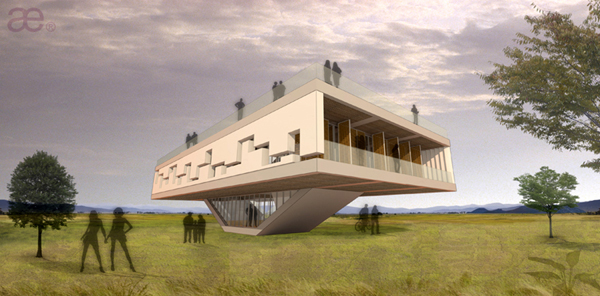
Basilica Escaladed: The 2-tiered organization of functional space sets clear hierarchies or simply a distinction between private and public quarters. In fact, the plan is three-tiered when considering also the central segment of the stairs, the circulation bar, as a prime inhabitable space that intricately bears its own programmatic and conceptual genes. These three tiers being of identical shape and width, we may note that here the stairs become more (than) prevalent, or even achieve a spatial significance equal to that of lateral bays (the ones with normatively flat floors), unlike what we recognize in the Corbusian Dom-ino scheme that pushes its stair to one end and tentatively secludes it from main livable spaces.
Legacies of the Modern: The visual cantilevers of north and south ends, the two balconies, emphasize the notion of horizontality. Yet none of the classically-modernist compositional moves really plays-out here: the hovering box archetype of architectural modernity is indeed undone. The initial illusion of an extruded prism thickened and hollowed is replaced at closer examination by an intricate system of structural slabs, ferrous surfaces rather than volumes. Indeed the project pins down a series of archetypes, emerging as an amalgam:
1. Bucky Fuller's Dymaxion House, actually a 'pin-point' rotational scheme (similarly pinned to the ground on a single 'node' by means of a service and circulation mast). Our Escalteca is not circular but remains pinned about a center 'knot'.
2. Corbu's Dom-ino, in being an elongated two-floor rectangle visually defined primarily by means of horizontal slabs and compositionally gridded (emphasizing the grid as a compositional tool). However Escalteca with its own absolutely canonical and orthogonal system, unlike the Dom-ino, does not make that Cartesian organization evident by means of further point-supports: ot features no structural columns per se.
3. Philip Johnon's Miesian Glass House, given that Escalteca features no solid perimeter, all its vertical partitions being glazed inwards and outwards (yet sun control systems alter the final outlook of elevations). The infamous Glass House lends its name essentially to the transparency of its vertical perimeter boundaries solely. Escalteca is indeed a glass house essentially lifted off a central node (a stem that unavoidably acts as a mini-bridge or as a dymaxionesque tower linking to the ground). Yet, in our case there is no apparent hearth, no brick fireplace and chimney as in Johnson's project, the hearth is here the scalas.
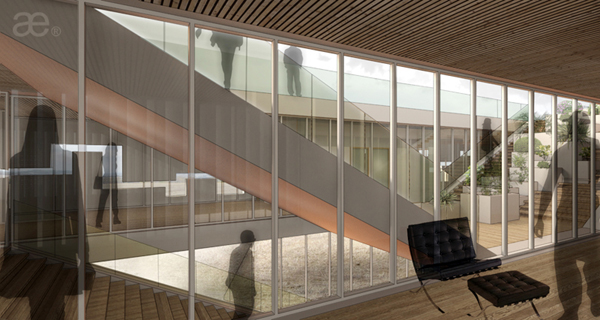
Theatricality: Explaining the attention to scalas, let us repeat that in the Dom-ino, as well as in the Dymaxion, the stair is spatially lost. While Peter Eisenman, in his text "Aspects of Modernism: Maison Dom-ino and the Self-Referential Sign"[1] argues, on the basis of formal analysis of the cut-outs at the landings of the Dom-ino, for "the stair being seen as half inside and half outside the slab."(...) subtraction and addition-can be read simultaneously. (...) For one must leave one plane in order to go up, re-entering the next plane from outside rather than pucturing its surface from within. Thus, the location of the staircase produces two propositions which are in opposition..." Truly in the Dom-ino the stair itself is a non-experiential module, is a separate utility element unavoidably serving circulation, similarly to an escape/fire stair/well at a multi-storied building. One needs to exit from main spaces to re-enter the bays of upper levels. Conceptually, functions are thus divided and spatial continuation inhibited: servant and serviced space is evidently identifiable; hierarchies are clear. Here stairs are definitely embodied into the spatial experience.
A cross-shaped amphitheater is here turned into one's private stage: a home and simultaneously a private Piazza di Spagna. Conceptually, an orthogonal amphi-theater with its two opposite tiers removed constitutes the entry vestibule - bringing in pure nature as a stage-set and allowing the direct access of entrants into a 'center stage' enlarged here to act as a belvedere; a glazed lobby in-between monumental symmetrical scalas.
While floors are clearly identified, the fluidity of views and movement trajectories, however structured the project may be, remains central. The primacy of deep diagonal views is emphasized by multiple vanishing points enabled by means of the diagonal slabs, the single-flight stairs. In other words, the scheme is encompassed by the fluid channeling of movement in consecutive loops, while visually it manages to remain sideways open as to bring the landscape in through lateral vistas and, vice versa, to project the house out.
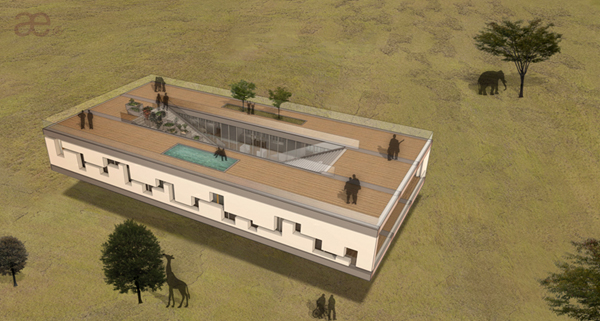
Thresholds of Glass:
A non-structural glass box, offsetting the perimeter of the main prism and traversed by the inclining slabs of the stairs, constitutes an inward boundary that separates the actual house from its atria and stairs, acting as a definite perimeter of entries/exits; of thresholds.
Solely a deviation leads to main spaces: a right-angle (90-degree) rotation is imposed upon entrants before and past the ascending of stairs, a unique feature that combines with direct views to open-up towards nature. This strange frontality of all stairs reconnects visually to the outdoors at both thresholds and landings.
The actual house is an extension of landings, a mezzanine on the way to the upper landscape, to a constructed open-air habitat in contrast to the inhospitable, unrefined openness of the ground floor: the covered (shaded) surface on-ground, understood here as the equivalent to a space of pilotis, remains undesigned, natural; hosts notions of the savage, holds wilderness, while the roof-top artificial landscape represents a plateau of tamed nature, the man-made realm.
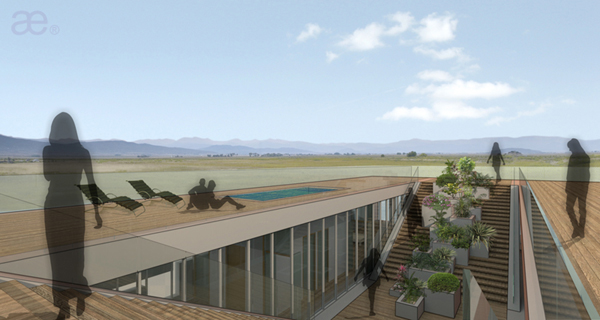
Air-linking Viaduct: As the longitudinal section reveals, the building is a pre-stressed bridge topped by a second one; virtually a swing atop another. A structural concrete ring, a horizontal loop, compressing the diagonal braces/pillars of the stairs, insures the workability of this pragmatic parti, a diagram of dynamic equilibrium that emphasizes the rigidity of solid concrete surfaces. The repetition (it all happens once more at a second level) of this basic ferrous system, announces and hosts an entirely outdoor movement loop atop the building; is fully exterior.
In an alternative interpretation, the structural system is reminiscent of a hydraulic hoisting device: a V-shaped sectional profile (of the symmetrical stairs) is topped with an O-shaped (donut-shaped) planar outline of the concrete slab. The parti is duplicated once more for the upper level, the roof slab, while these two main concrete floor-plates do not touch or connect otherwise - other than through diagonal plates, the paired wings of stairs.
Diagonal shafts spreading the full width under the tilted composite slabs of stair-flights hold utility networks, ductwork and services. Two mini-cores of services are centered in the lateral wings of main functions and through the composite concrete slab lead ductwork to such inclined shafts.
Facades are basic yet tectonically challenging: clear-glass + vertical louver façade to the west, and to the south a solid wall separated violently, almost shattered in two by a longitudinal gap (formally alluding to gaucho's decorative patterns of the geographical region), a schism that emphasizes the non-structural nature of this solid rain-screen cladding over the actual glass-wall enclosure.
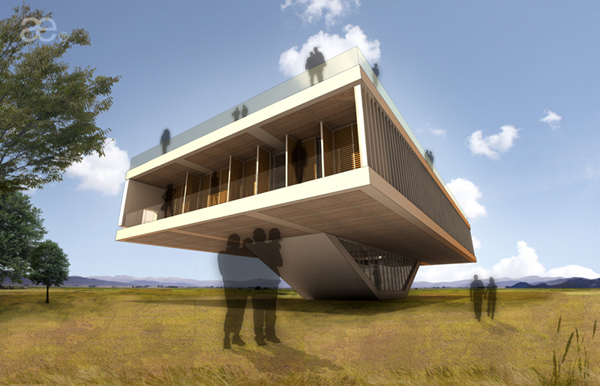
Over-land Reformatted: This is an archetypal atrium-house floating and boasting a sequence of "roof courts." The full area of the building footprint is re-gained and compensated as an elevated man-made space in the outdoors, while its original boundary is left as pure nature, wild, below.
Indoor greenery crawls up the stairs in one end and is repeated as an outdoor roof garden escalating towards the habitable terrace. This upmost plateau features a sunken swimming pool and, on the symmetrical wing, a soil court for small trees and plants with deeper roots.
In the Dom-ino project the ground plane is an element of the building - a concrete slab - and nature is entirely outside. Even in executed pilotis such as in the notorious Villa Savoye, the colonnade becomes a mild boundary between free soil and concrete foundation base. For Escalteca the foundation system develops vertically, and thus frees totally a maximal area under the building footprint, enabling nature to take over: wilderness is right at the entry door.
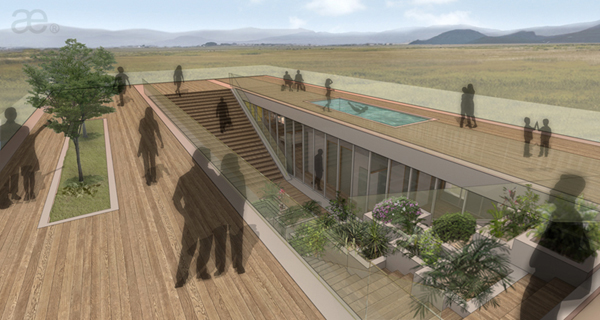
Escalteca of the Choetheque Series
Location : Pehuajo, Pampas de Provincia de Buenos Aires, Argentina.
Aristotheke Eutectonics, æ®: Office of Architecture, Research and Design.
Text, Design, Renders, Modeling: Aristotelis Dimitrakopoulos (AFD).
Team Credits:
Photographic Editing: Jose Antonio Medina, Pilar Gonzales Burgos, Danai Lazaridi, Maria Roussaki, Ivana Bosnjak, AFD.
Drawing: Vaso Gkioka, Maria Roussaki, Angela Giannakopoulou, Anthi Malaki, AFD.
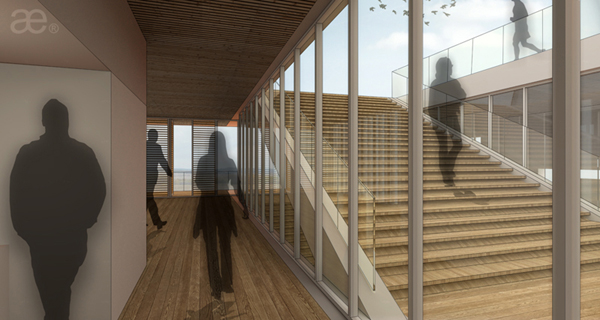
[1] Peter Eisenman, "Aspects of Modernism: Maison Dom-ino and the Self-Referential Sign," in Oppositions Reader: Selected Readings from A Journal for Ideas and Criticism in Architecture, 1973-1984, ed. K. Michael Hays (New York: Princeton Architectural Press, 1998), 189.
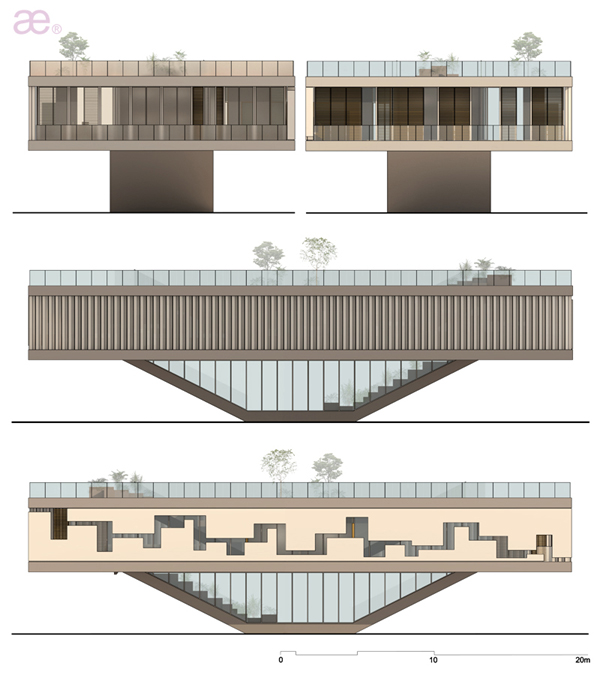
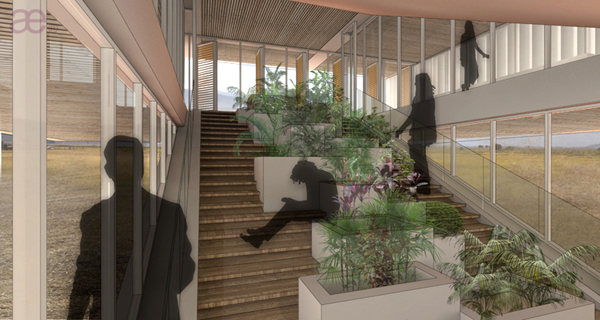
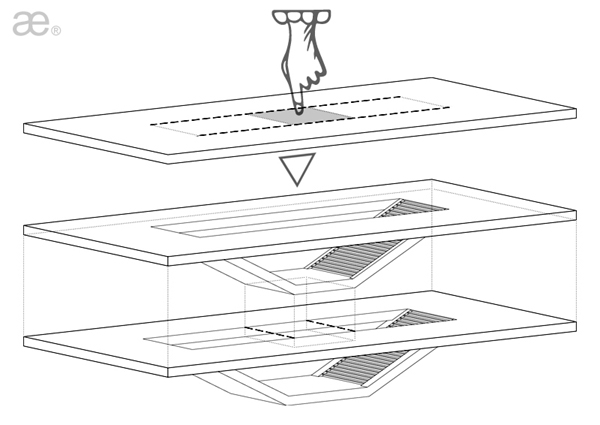
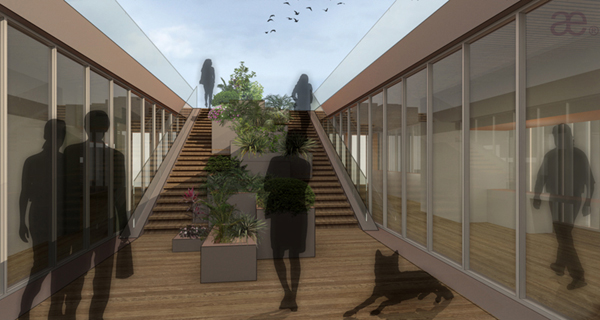
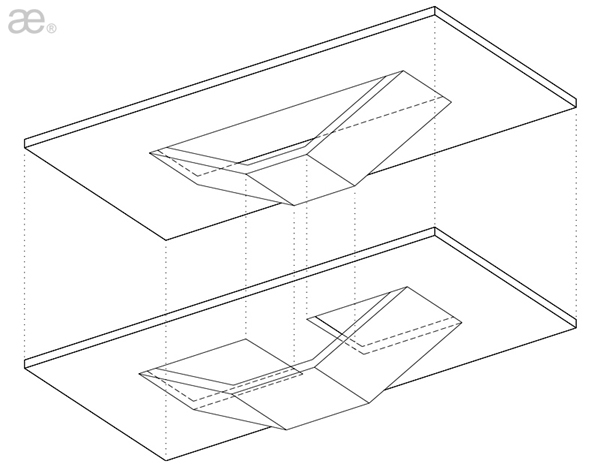
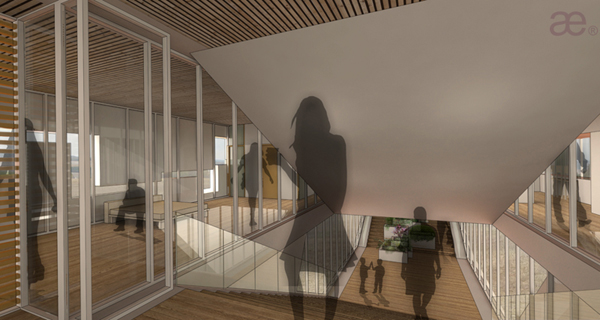
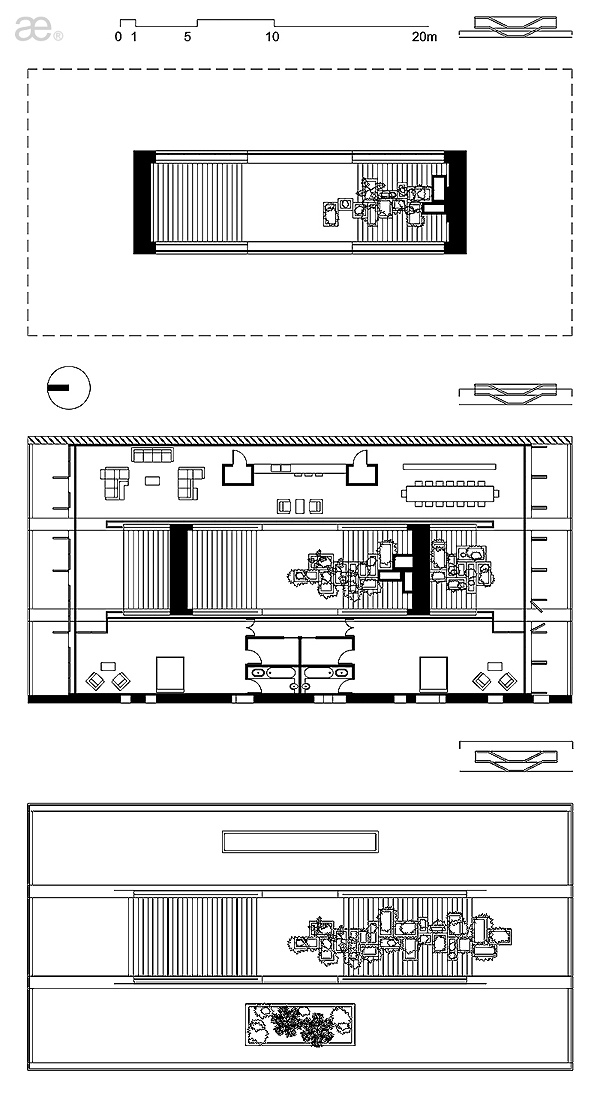
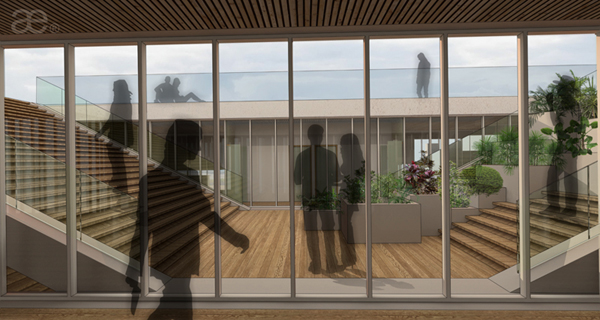
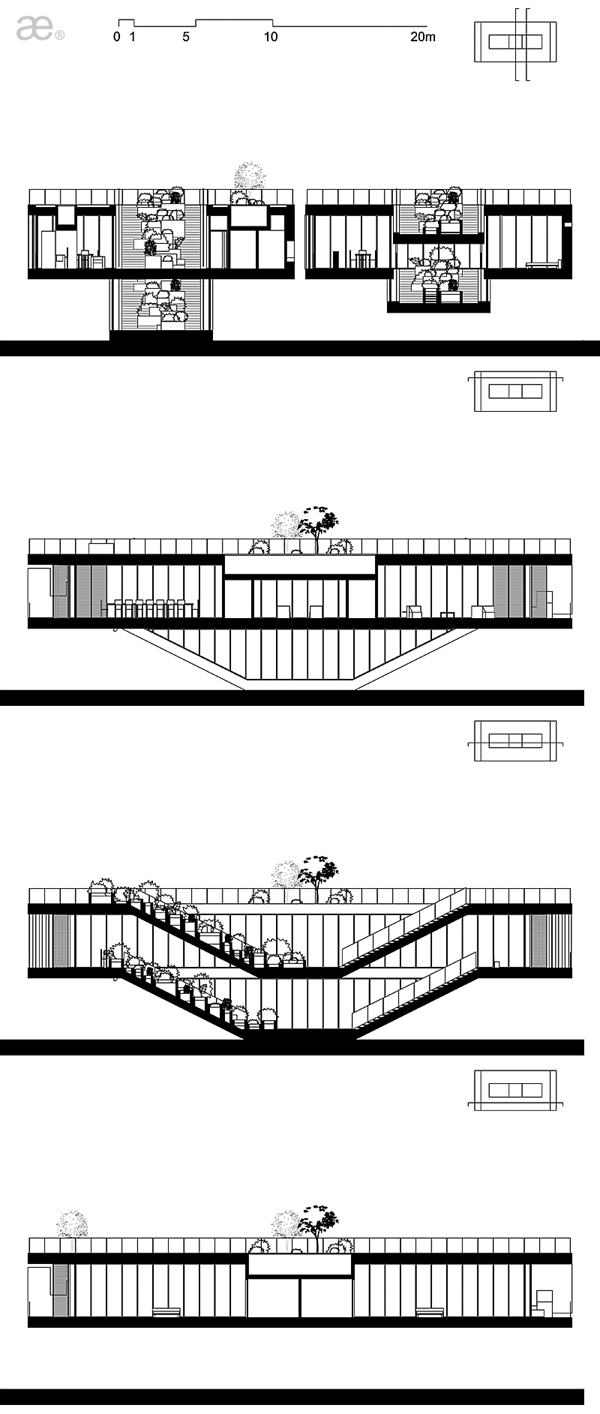
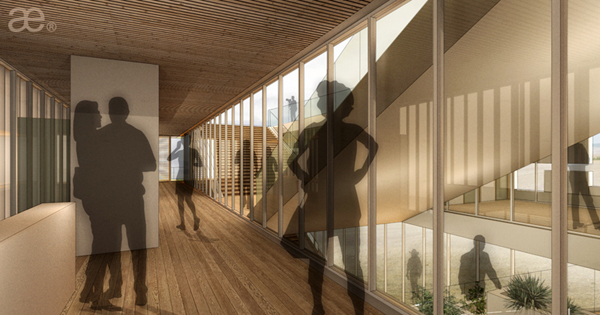
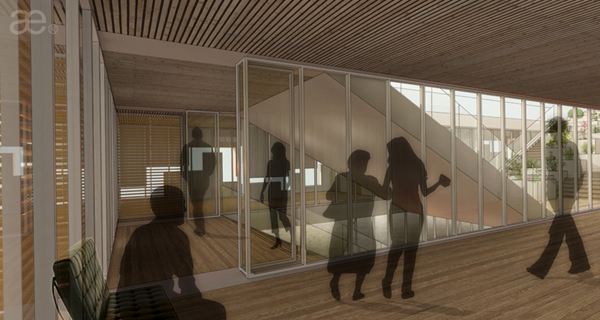
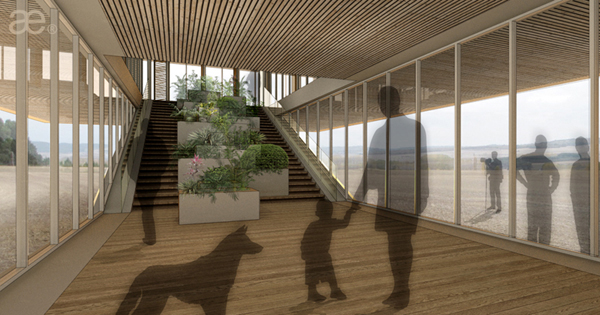
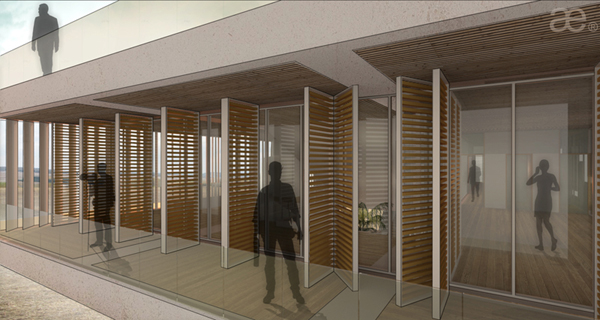
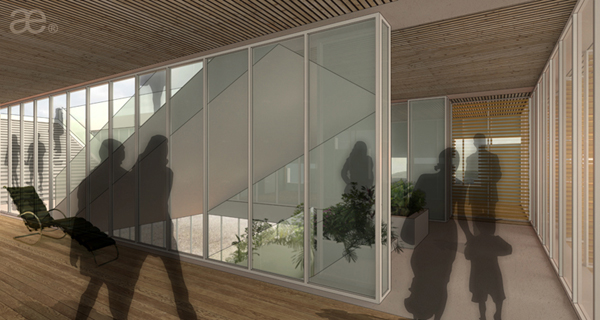
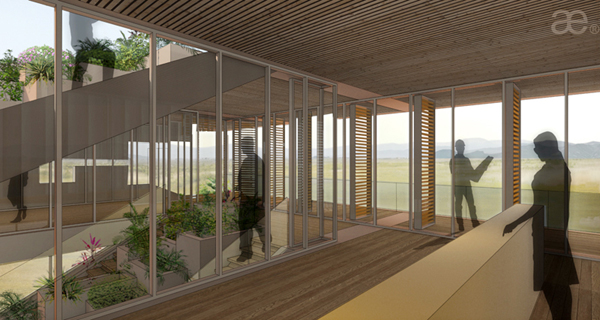
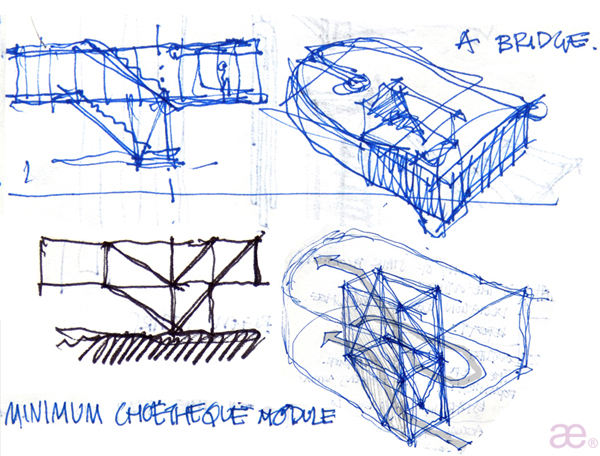
Related articles:
- Piloting Pilotis ( 31 December, 2013 )
- Schottheke of the Choetheque Series ( 01 June, 2014 )
- Floatheca Rh of the Choetheque Series ( 01 August, 2014 )
- Floatheca Sp of the Choetheque Series ( 26 September, 2014 )
- O-theke of the Choetheque Series ( 11 March, 2015 )
- Floatheca Cy of the Choetheque Series ( 03 January, 2015 )
- Ophthalteca ( 24 June, 2015 )
- Y-theca of the Choetheque Series ( 08 October, 2015 )










